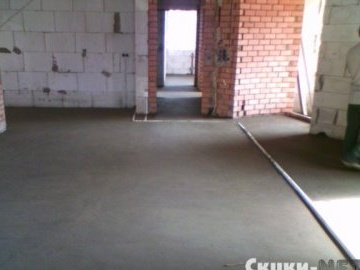Types of concrete floors
Concrete floors are in great demand in industrial premises and enterprises. This is due to the performance of concrete, such as reliability, durability, wear resistance and strength. Concrete floors are divided into reinforced and unreinforced. This division occurs due to the technology of laying concrete floors.
Reinforced concrete floors are a stable monolith able to withstand a large load, while it does not crumble and does not crack. Reinforcement technology is made using fiber, which is kneaded into the concrete mixture. Fiber can be made of various materials: drawing, synthetic substances, steel or wire. Another option for reinforcing is the use of mesh or bar reinforcement. In order for concrete floors to serve for a long time, concrete floors technology is important.
Unreinforced concrete floors, in turn, are divided into single-layer and multi-layer. Single-layer unreinforced floors are used when the coating will not be subjected to heavy loads or waterproofing. If any loads on the material are expected, then it makes sense to make them multilayer, which will increase their strength. The top layer of concrete floors must be treated. The best treatment here will be impregnation for concrete. Impregnation will ensure the strength of the top layer of the coating, preventing the formation of cracks and hardening concrete. Trowels help distribute concrete evenly.
Concrete floors in industrial premises most often have a reinforcing cage under them. It can be laid in a single layer or in several layers. After that, you can start pouring concrete. Concrete is poured with cards, and then compacted. Also pouring concrete with the addition of fiber helps speed up the process. After laying the concrete, it is leveled by means of vibration equipment and a rail. Fiber is used to increase the viscosity and tensile strength of the material when bending. The use of fiber is designed to harden the concrete, make it more wear-resistant, resist the appearance of cracks and splits.
Not a single technology of laying concrete floors is complete without reinforcing and protective means. Impregnation for concrete is an integral part of the process for both reinforced and non-reinforced floors. This composition is designed to improve the performance of concrete, its density, strength, wear resistance.Thanks to this coating, concrete does not peel off even under the influence of harmful environmental influences.
Impregnation for concrete fills the pores of a substance, making its particles more viscous. Thus, it prevents the penetration of water, moisture and steam into the material. Impregnation also resists chemical attack on concrete. Such a composition has a long service life, does not require constant care, is hygienic, accessible and safe in the process. Thanks to modern technology, concrete floors have acquired new qualities and new customers. They began to be used not only in warehouses and industrial enterprises, but also in shopping and entertainment complexes, as well as in gas stations and parking lots.

